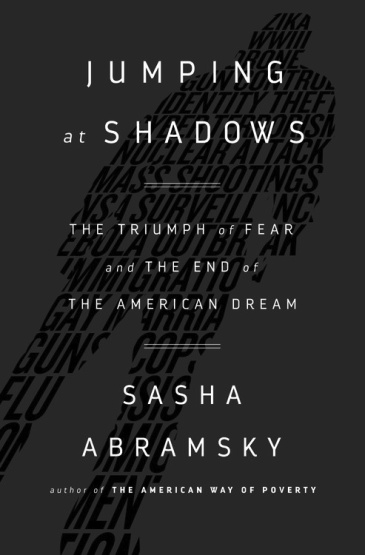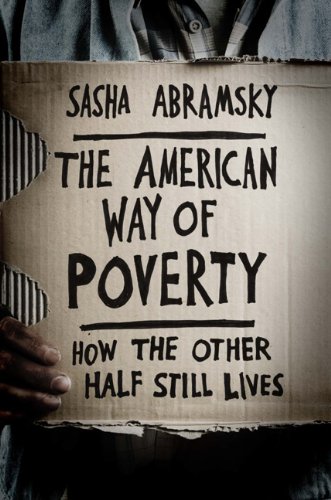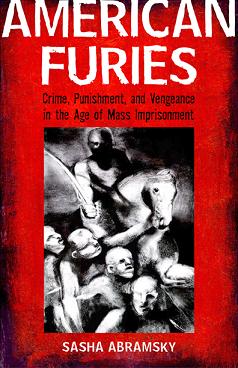The Voices of Poverty in America
Posted on Apr 14, 2013 in Uncategorized
Originally published Dec. 19, 2011 for Open Society Foundations.
Poverty in the United States is of a staggering scale, and becoming more entrenched by the month. Fifty million Americans live at or below the federally defined poverty line; a similar number survive on food stamps. Tens of millions more hover just above the poverty line, their lives dominated by insecurity, but deemed ineligible for government assistance.
Voices of Poverty was conceived, in conversation with the Open Society Foundations, as a way to tell the stories, in their own voices, of impoverished men, women, and children around America. My aim was to put together an audio archive containing the voices, and stories of America’s invisible poor.
Visitors to the site can listen to a growing audio archive of interviews, exploring many different gradations of poverty, causes for that poverty, and potential solutions to this crisis. Over the coming months and years, the site will grow to include stories from around the country. The site also contains national and statewide poverty data, as well as photographic archives documenting poverty.
As I have traveled around the country these past months, chronicling stories of hardship in 2011 America, three things have struck me with particular force:
The first is the sheer loneliness of poverty; the fact that poverty pushes people to the psychological and physical margins of society—isolated from friends and relatives, pushed into dilapidated trailer parks, shanties, or ghettoized public housing, removed from banks and stores, transit systems and cultural institutions. The poor live on society’s scraps—a few dollars in government assistance or charity, donated food, thrift store clothes. They can afford neither transport to venture out of their communities, nor simple luxuries such as movies or a cup of coffee with friends in a café, to vary the routines of their daily lives. Embarrassed by their poverty, many told me that they have essentially withdrawn from all but the most necessary, unavoidable social interactions.
The second thing that struck me is the diversity, the complexity, of poverty. Its causes, and therefore its potential solutions, cannot meaningfully be reduced to a pat list of features. There are people with no high school education who are poor; but there are also university graduates on food bank lines; there are people poor because they have made bad choices, gotten addicted to drugs, burned bridges with friends and family; and then there are people who have never taken a drug in their lives, who have huge social networks, and who still can’t make ends meet. There are people who’ve never held down a job, and others who hold down multiple, but always low-paying, jobs, frequently for some of the most powerful corporations on earth. There are people who have never had a bank account and use payday loans and other predatory lending sources whenever they need access to extra cash; and there are others who, during flusher times, owned huge suburban houses and expensive cars. There are children whose only hot meals are what they are given at school; young adults who have nothing now and never really have had anything earlier in life either; military veterans who have struggled to find a place in civilian life; middle-aged and once-middle-class people falling down the economic ladder as the recession fails to fully lift; and elderly people cascading into destitution as savings evaporate and expected equity in their homes fails to materialize.
Poverty is, in other words, as diverse as is America itself. What the poor have in common, however, is an increasingly hardscrabble existence in a country seemingly unable—or at least unwilling—to come to grips with their collective tragedy.
Yet if the lives of America’s poor are increasingly desperate, the desire to make something of those lives remains a force to be reckoned with. The third thing that struck me in my travels around the country is the sheer resilience of people who, battered by tough economic times, could be excused for thinking life never gives them any breaks. Instead, many of the men and women I talked to were doing everything they could to ensure that their futures would look brighter than their pasts. They were going to school, taking job training classes, looking for any and every source of income, struggling to make sure that their kids had enough food to eat and little extras to enjoy. It was, in many ways, a humbling, inspiring experience.
Some of these people will, indeed, succeed; they will be the ones who pull themselves up by their proverbial bootstraps. Yet millions of others, despite their best efforts, won’t. The problems confronting America, the scale of the poverty unleashed, is simply too large. They are problems that require tremendous social investments and political imagination. This is America’s challenge-of-the-moment.
In seeing the size of the challenge, my hope is that site visitors will be stimulated to place poverty back where it belongs: full-center in the American political debate. That fifty million Americans live in dire poverty, their economic security shattered, their prospects dim, ought to trigger both outrage and creativity: outrage that such a situation has been allowed to fester, to grow, for so long; creativity in that solutions to these problems have to emerge at every level of society—amongst the political classes, but also at the grassroots; amongst regulators and policy innovators, but also in classrooms, in community credit unions, in union halls and amongst the poor themselves.
The more time I have spent immersing myself in this project, the more I have come to believe that this is a challenge with existential significance. It’s not just about dollars and cents; it’s about our collective values, our priorities, our sense of justice.




Post a Comment
You must be logged in to post a comment.